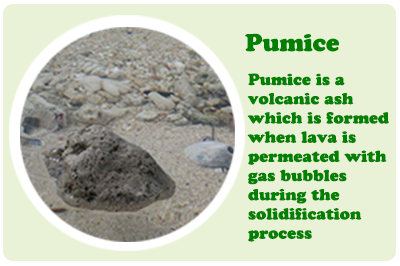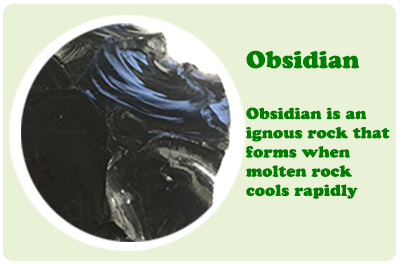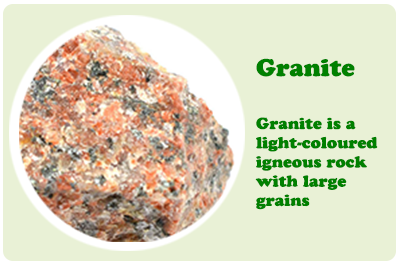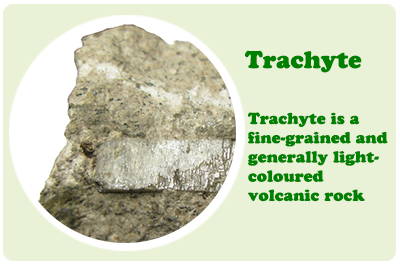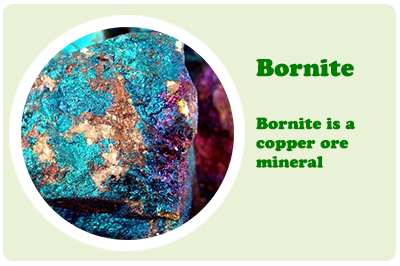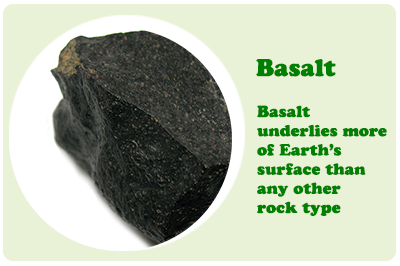Igneous rocks are formed from the solidification of molten rock material. There are two basic types:
Intrusive igneous rocks crystallise below the Earth's surface, and the slow cooling that occurs there allows large crystals to form. Examples of intrusive igneous rocks are diorite, gabbro, granite, pegmatite and peridotite.
Extrusive igneous rocks erupt onto the surface, where they cool quickly to formsmall crystals. Some cool so quickly that they form an amorphus glass. These rocks include andesite, basalt, obsidian, pumice, rhyolite, scoria and tuff.
Sources: http://geology.com/rocks/igneous-rocks.shtml
